Medicinal & Aromatic Plants
Open Access
ISSN: 2167-0412
ISSN: 2167-0412
Research Article - (2019)Volume 8, Issue 6
The present study deals with climbers creepers and twiners of Baba Ghulam Shah Badshah University, and adjoining areas of district Rajouri. Ethnomedicinal plants are necessary for treatment of various diseases and production of various medicines. The Climbers, Creepers and twiner are extensively used as medicine. The local people of district Rajouri use 43 climbers of the vascular plants for medicine, vegetable and fodder. As tradition culture is disappearing the knowledge about the plants wealth is going to lost. The information on Climbers, Creepers and twiner Species is obtained while studying the flora of (J&K) Himalaya and medicinal plants of Pirajapati Prohit. For each plant its family, botanical name, vernacular name, common name, Local name, English name, flowering Period is given. As per the climatic condition the plants are showing their presence in different sites. Some plants species which are climber creepers and twiner in their tendency are referred as climber creepers and twiner. A climbing plant includes tendrils and twiner having adventitious roots on nodular part of the stem helpful for their climber creepers and twiner on ant substratum. A total of 43 climbers’ creepers and twiner species belonging to 36 families were recorded for the medicinal, vegetable and fodder. Among all the families Convolvulaceae were found to be most abundant having 6 species followed by Cucurbitaceae and Dioscoreaceae.
Ethnobotanical; Climbers; Creepers & Twiner
Ethnomedicinal plants are necessary for treatment of various diseases and production of various medicines. The Climbers, Creepers and twiner are extensively used as medicine. The local people of district Rajouri use 43 climbers of the vascular plants for medicine; vegetable and fodder. Plants are remarkable source of valuable substances for human beings. These are showing variation in their habitat as well as their habit. As per climatic condition, the plants are showing their presence in different sites. Plants are essential for healthier life because they provide us medicines, which are both effective and safe, without any side effect. Plants play a vital role in our lives more than animals mainly due to their extraordinary array of diverse class of biochemical’s with a variety of biological activities [1,2] ethnobotanical information on medicinal plants and their uses by indigenous cultures is useful not only in the conservation of traditional cultures and biodiversity, but also for community health care and drug development. This information is utilized as a guide for drug development. This information is utilized as a guide for drug development under the premise that a plant which has been used by autochthonic people over a long Period of time may have an allopathic application [3]. Some important studies on diversity of climber’s creepers and twiner in different part of India by Gentry, Ghosh and Mukherjee [4], Bandopadhya and Mukherjee [5], and, Jangid and Sharma [6] suggest that the climber creepers and twiner are forming man components of ecosystem. The conservation of important and endangered medicinal plants, their conservation and the Ethnomedicinal uses, including climbers is very essential to establish their appropriate utilization [7-9]. The Rajouri however are floristically the least surveyed district in the Jammu province, with scanty and scattered information available on their flora [10-13].
The aim of the current research is to highlight the key of climbers creepers and twiners of BGSB University campus and adjoining areas of district Rajouri Jammu and Kashmir India.
The ethnobotanical study on useful climber creepers and twiner of district, Rajouri state Jammu & Kashmir India was carried out by Mahmood [14] and 43 species of 33 genera belonging to 36 families were found useful in everyday life of local denizens as medicinal, fodder/forage, shelter, and in making agricultural tools. Most of the shrubs were noticed having more than one ethnomedicinal uses.
Jammu & Kashmir, India is a very rich center of biodiversity with important hot sports, such as rivers, lakes, streams, spring, steep mountain slopes and road, waste lands, cultivated fields etc. The present study was accomplished to document of the Ethnomedicinal data on the useful climbers creepers & twiner of Distt Rajouri, state Jammu and Kashmir India, it is located at southern part of of Jammu division in the foot hill of Pir Panjal range between 32°- 58′ and 33°-35′ latitude and 74°-81′ longitude at an elevation range of 370-6000 msl, It is bounded on the eastern side by district Reasi Western side by Pok, Northern side by District Poonch it is about 915,m above the sea level . Covering an area of 2630 sq.km, and as population of 6, 19,266 per 2011 census [15].
The present communication pertains to climbers creepers and twiner were collected from Baba Ghulam Shah Badshah university Rajouri and adjoining area of district Rajouri state Jammu and Kashmir India, and were identified with the help of local flora of Udhampur Ajai Swami and B. K. Gupta, Singh and Kirn: Kirn: Vir Jee et al., Dar et al., Malik et al. General information about the climbers creepers and twiner was collected from the local peoples. About 70 local peoples respondents including both male and female was interviewed. The question about the indigenous uses of climber creepers and twiner plant species were asked in Urdu, Gojjri & Phari. Plants specimen collected from the area were dried, pressed and mounted on herbarium sheets. Correct identified herbarium data were deposited in Centre of Biodiversity Studies, BGSBU Rajouri for future reference [16].
During the present probe based on ethnobotanical useful climbers creepers & twiner, of Baba Ghulam Shah Badshah University, campus and adjoining areas of district Rajouri State Jammu and Kashmir India. The present papers first time provides inventory of 43 species of vascular plants belong to 36 families were collected by the author from various areas in the Rajouri district and take the interviewed for their local uses peculiarly in medicines. (Author contacted the tribal people & discussed with him in local languages (Gojjri) and collected the information of medicinal plants. The Present paper is the result of detailed field studies made during the floristic surveys conduct the Rajouri Poonch from 1987-1988-1993 & from 2008-2010 and again from the data collected for various uses of these species is presented in Table 1 and Figures 1-43.
| Botanical name | Family | Common name | Local name | Folk Medicinal Uses |
|---|---|---|---|---|
| Asparagus racemosus Willd. | Asparagaceae | Wild asparagus | Santa war Sataular | The root is bitter sweet emollient, cooling, nervine, tonic, treatment of constipation, stomach ache, and tonic. Juice of chopped roots is given to relive liver problem and weakness. |
| Cardiospermum halicacabum L. | Sapindaceae | Ballon vine/Heart pea | Qulqul | Stem and leaves are used as vegetable. Dried leaves crushed to make tea used for itching of skin. Fresh crushed leaves used as a poultice on swelling. Leaves, seeds and root are used for rheumatism, stiffness of joints and Snakebite. Seeds are useful for nervous disorders. |
| Cissampelos pareira L. | Menispermaceae | Velvet leaf, Abuta | But bel | Used locally in case of unhealthy sores & used sinuses. It is frequently prescribed in the later stages of the bowel complaints, in conjunction with aromatic it is reported by antilithic (Dymock). |
| Clematis buchananiana D C | Ranunculaceae | Lemon clematis/white climber | Uses as fodder | |
| Convolvulus arvensis L. | Convolvulaceae | Field bindweed, Strain khuri | Kharpavo gi bel | It is used as fodder for cattle. The root is purgative and diuretic. |
| Cryptolepis buchanani Roem & Schult. | Asclepiadaceae | Indian Sarsaparilla (black var.) | Doodh bel | Blood-purifier, alternative, used for rickets in children, in combination with euphorbia microphylla, the herb is used as a galactagogic, its decoction of the stem is used as a supporting drugs in paralysis, of the root bark in rheumatism. |
| Cuscuta reflexa Roxb. | Cuscutaceae | Amar bel /Akash bel | Neela Dhari | Plant decoction is given for rheumatic pain. The local people use its sap to prevent dandruff. The hair also becomes soft and silky. |
| Dioscorea alata L. | Dioscoreaceae | Purple Yam | Tar gi bel | Roots cooked- usually boiled or baked and used as a vegetable. |
| Dioscorea bulbifera L. | Dioscoreaceae | Air potato-Wild yam Local name: Kaenthi gandaa | Boiled bulbuls are eaten for food. Bulbils are also used as birth control pill. | |
| Diplocyclos palmatus (L.) Jeffrey | Cucurbitaceae | Striped cucumber or (bryony) | Khakhun | leaves are used against inflammation and impotency, in the treatment of malarial fever. Plant is also used as an antidote to snake bite, roots are used in the treatment of asthma. |
| Ficus pumila L. | Moraceae | Creeping fig | Doda gi bel | The aerial parts constitute a systematic remedy and blood reconstituent. They are used in treating chronic dysentery, hemorrhoids, impotence, menstrual disorders, boils and impetigo. |
| Ficus sarmentosa Buch-Ham. ex Smith. | Moraceae | Fig tree | Doda gi bel | Used as a fodder and used as firewood. |
| Fragaria vesca L. | Rosaceae | Strawberry | Kenichoe | Wild strawberry leaves are mildly astringent and diuretic. The plant is little used medicinally today but it can be taken to treat diarrhea and dysentery. The leaves were used as a gargle for sore throats, and in a lotion for minor burns and grazes. |
| Gloriosa superba L | Colchicaceae | Flame lily, Climbing lily, | It is used as ornamental plant. Tubers used in rheumatism, sexual stimulant but very small doses because tubers are very toxic and may cause death. | |
| Hedera nepalensis K. Koch | Araliaceae | Himalayan ivy | Leaves are useful for diabetes, cathartic and diaphoretic. Berries are purgative and use to cure febrile disorders. | |
| Helinus lanceolatus Brandis. | Rhamnaceae | Saltbush and orache | Chamba Ki bel | Plant extract is useful for scabies and skin disease. |
| Ichnocarpus frutescens (L.) R. Br. | Apocynaceae | Black creeper | The roots are sweet, refrigerant, febrifuge, aphrodisiac, alternate, diuretic, demulcent and tonic. They are useful in vitiated conditions of Pitta, burning sensation hyperdipsia, fever, seminal weakness, Cephalalgia and general weakness. | |
| Ipomoea indicia (Burm. F.) Merr. | Convolvulaceae | (Blue dawn flower) Morning glory | Kharpavo gi bel | The leaves are used as soap to wash clothes. The sap from the crushed leaves is drunk to relieve dysentery. |
| Ipomoea nil L. | Convolvulaceae | Japanese morning glory, ivy morning glory | Ilri gii bel | the seeds are officials in the Indian pharmacopoeia are a purgative and are a substitute for Jalap (Ipomoea purge (Winder) Hayne. |
| Ipomoea pes-tigridis L. | Convolvulaceae | Tiger footprint (Tiger’s paw) | Ilri gii bel | Stem and leaves are used for eyes and skin disorders. Fruit with persistent calyx is used in impotency. |
| Ipomoea purpurea (L.) Roth | Convolvulaceae | Common morning glory | Ilri bel | Uses as fodder. |
| Ipomoea tricolor L. | Convolvulaceae | Mexican morning glory | Kharpavo gi bel | The seeds contain small quantities of the hallucinogen. This has been used medicinally in the treatment of various mental disorders. |
| Ipomoea triloba L. | Convolvulaceae | Aiea morning glory, | Iri gi bel | Uses as fodder. |
| Jasminum dispermum Wallich. | Oleaceae | Pink jasmine | Chameli, | It is used as fodder for cattle. |
| Lathyrus aphaca L. | fabaceae | Yellow Pea | Jungli mutter | The ripe seeds are used to be antibacterial narcotic. They are used in the treatment of toothache. |
| Lonicera quinquelocularis Hardw. | Caprifoliaceae | Translucent honeysuckle | It is used as fodder for cattle. | |
| Lonicera japonica Thumb. | Caprifoliaceae | Japanese honeysuckle | The stems and flowers buds are alternative, antibacterial, anti-inflammatory, antispasmodic, depurative, diuretic, and febrifuge. | |
| J Luffa cylindrica L M. Roem. | Curcurbitaceae | Sponge gourd | Jungli lokii | The fruits are diuretic emollient depurative, laxative, anthelmintic and galactagogue. They are useful in vitiated condition of Pitta, splenopathy. |
| Lygodium japonicum (Thumb.) Sw. | Lygodiaceae | Vine-like fern | Boojni / kunji | The plant is used as an expectorant. A decoction of the vegetative parts and spores is used as a diuretic. |
| Marsilea quadrifolia L. | Marsileaceae | Four leaf/ Chopattia | Khatri | The plant is also applied externally in the treatment of snake bites and skin injuries, including abscesses. |
| Oxalis corniculata L | Oxialidaceaae | Creeping wood sorrel, or (Procumbent yellow sorrel) | Desi Shutal | The plant is used as a remedy for convulsions in children and for healing fractured bones. The ground leaves are eaten as chutney to help purify the blood. Ground leaves are also used in treating dizziness, diarrhea and dysentery. The juice from leaves is applied to open wounds. The plant is used to treat burn wounds and body sores. |
| Polygonum capaitatum Buch. –Ham. ex D. Don Syn. Persicaria capitata | Polygonaceae | Knot weed | It has antibacterial, analgesic, anti-inflammatory, diuretic, and anti-oxidative properties. It is commonly used to treat various urologic disorders including urinary calculus and urinary tract infections. | |
| Quisquails indica L. | Combretaceae | Rangoon creeper, | Malti | Ascariasis, ringworm disease, infant, malnutrition. Fruits and seeds anthelmintic. Seeds soporific also. Ripe seeds roasted and given in diarrhea and fever, also used in rickets. Macerated in oil, seeds used for application in parasitic skin troubles. Seeds yield fatty oil with purgative action. |
| Rosa moschata Herrm | Rosaceae | Musk rose | Phalwari | Root extract is aphrodisiac. Flowers with white rice are used as purgative, anthelmintic and digestive disorders. |
| Rubia cordifolia L. | Rubiaceae | Manjisha /Indian madder | Khori bel | The leaf stem and roots are used to cure eczema and other skin diseases by local People. They are useful in colic wounds, ulcers, Pectoral disease and debility.1-2 cm long piece of root is grounded and mixed with powder of 4-5 black peppers is given to the patient with water to treat Oedema. |
| Smilax aspera L. | Smilacaceae | Rough bindweed | Dodaa bel. | The ripe fruits are squeezed and applied to the skin in the treatment of scabies. |
| Solena amplexicaulis (Lam). Gandhi | Cucurbitaceae | Creeping cucumber | Bun kereli | The tuberous roots are sour, astringent, thermogenic, appetizer, carminative, digestive, purgative, expectorant and invigorating. The leaves are useful in allergic inflammations and the seeds are used for their purgative action. |
| Tinospora cordifolia (Lour.). Merr. | Menispermaceae | Gilo, Gurch | Gilo, gulch | T. cordifolia is used in the Indian Ayurvedic system of medicine for the treatment of Jaundice, diabetes, and rheumatoid arthritis and also used, as an immune stimulant. |
| Trichosanthes cucumerina L. var. anguina | Cucurbitaceae | Wild Snake Gourd | Khaakri | Tender fruit is used as vegetable. Fruit extract is very useful for jaundice and other liver and digestive disorders. |
| Tylophora hirsuta Wight | Asclepiadaceae | Emetic swallow-wory | Ulti gii bel. | The roots and leaves are sweet, acrid, aromatic, emetic, purgative, expectorant, vulnerary, diaphoretic, stomachic and antiviral. |
| Vicia hirsuta L | Fabaceae | Hairy tare | Nile phalli | No medicinal uses for V. sativa were found in the literature, but the leaves are edible. It has a high economic importance as green manure and forage. |
| Vicia sativa L. | Fabaceae | Common vetch, | Nile phalli | It is used as fodder for cattle |
| Vitis jacquemontii L Family: Vitaceae | Wild grape | Daakh | Sap of young branches used as remedy for skin disease. Leaves astringent used in diarrhea. Juice of unripe fruits as astringent used in throat infections. Sap of plant is given against foot and hand burning. Vitis sap is used to treat heart disease. |
Table 1: Data collected for various uses of these species.
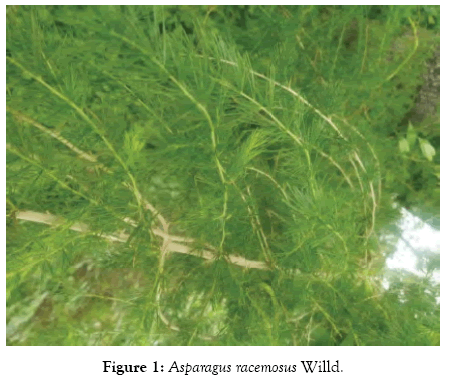
Figure 1: Asparagus racemosus Willd.
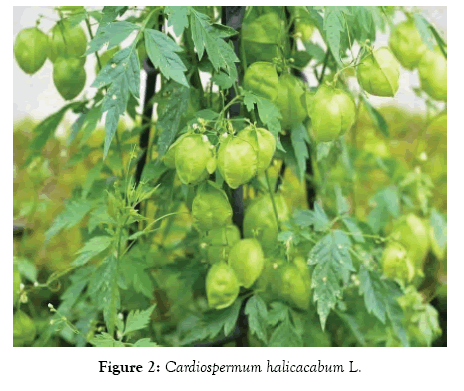
Figure 2: Cardiospermum halicacabum L.
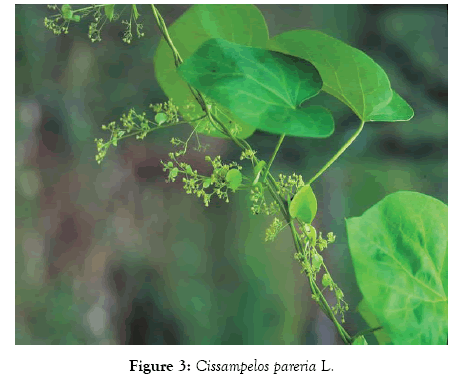
Figure 3: Cissampelos pareria L.
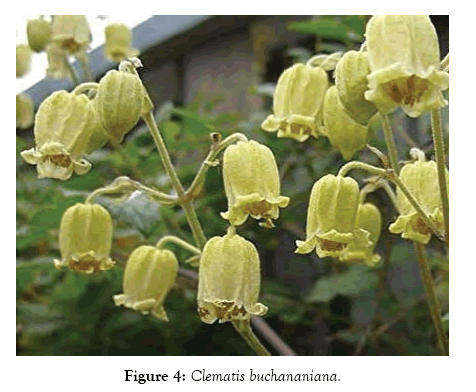
Figure 4: Clematis buchananiana.
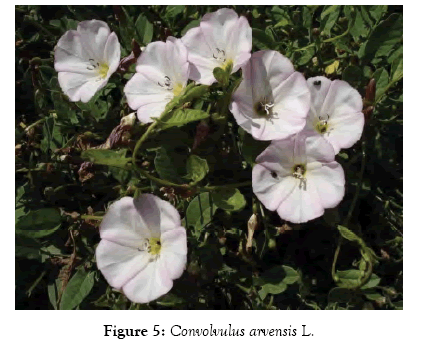
Figure 5: Convolvulus arvensis L.
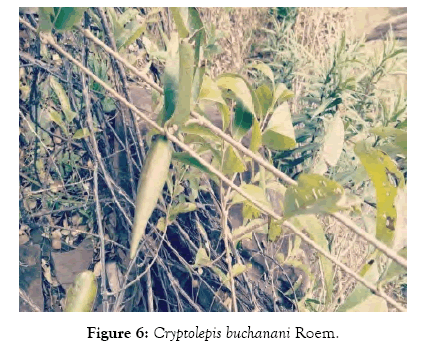
Figure 6: Cryptolepis buchanani Roem.
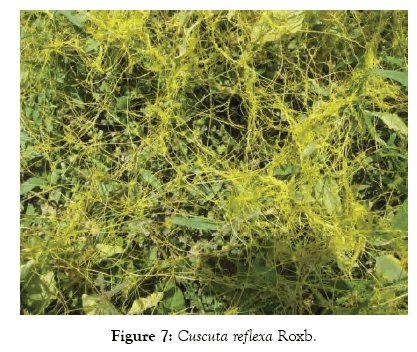
Figure 7: Cuscuta reflexa Roxb.
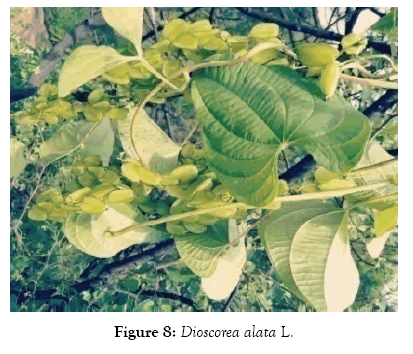
Figure 8: Dioscorea alata L.
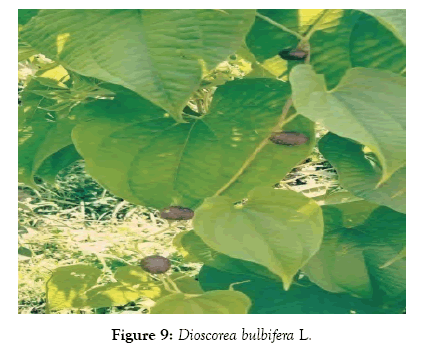
Figure 9: Dioscorea bulbifera L.
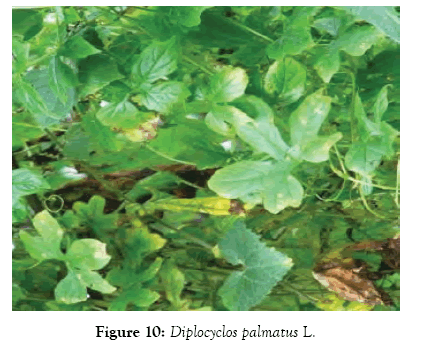
Figure 10: Diplocyclos palmatus L.
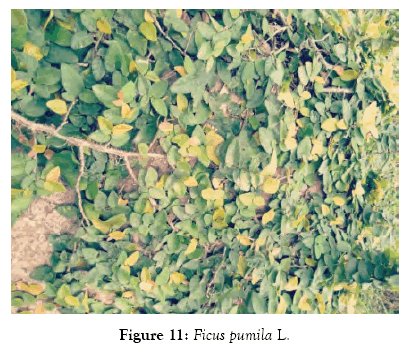
Figure 11: Ficus pumila L.
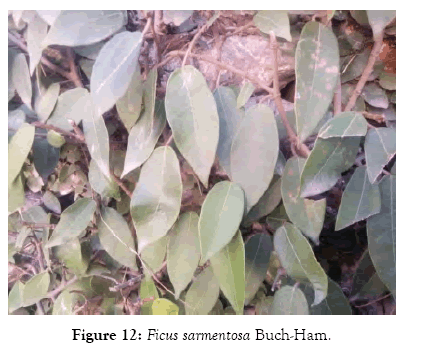
Figure 12: Ficus sarmentosa Buch-Ham.
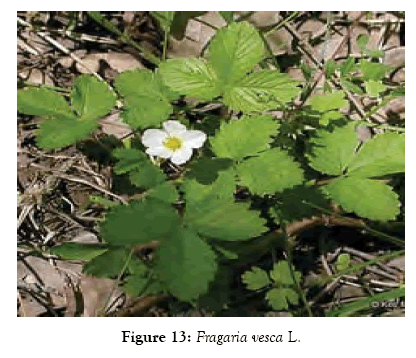
Figure 13: Fragaria vesca L.
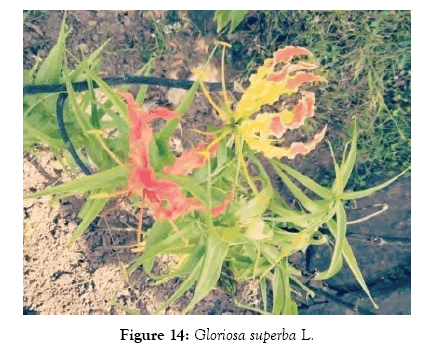
Figure 14: Gloriosa superba L.
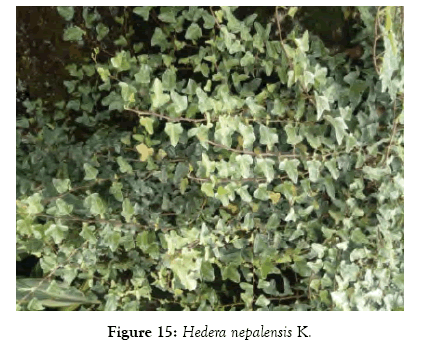
Figure 15: Hedera nepalensis K.
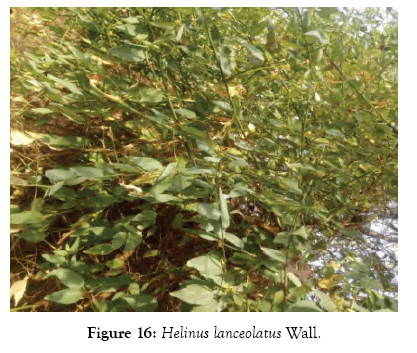
Figure 16: Helinus lanceolatus Wall.
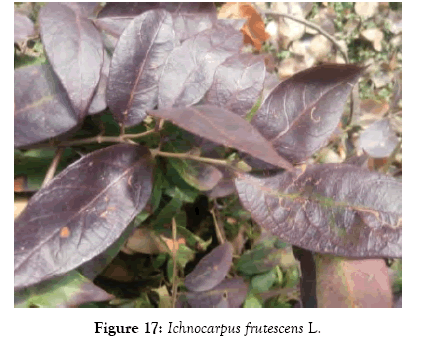
Figure 17: Ichnocarpus frutescens L.
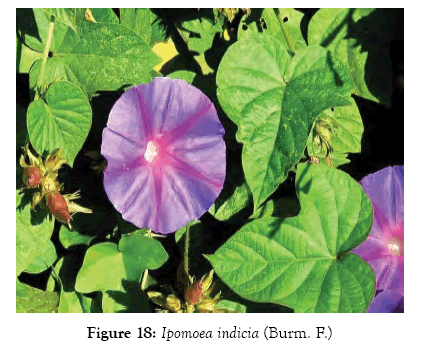
Figure 18: Ipomoea indicia (Burm. F.)
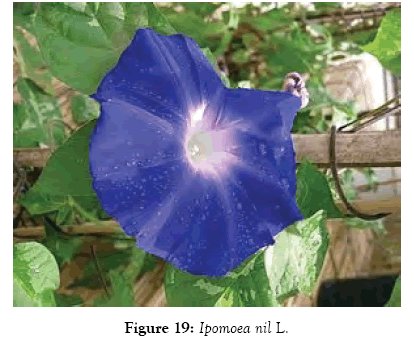
Figure 19: Ipomoea nil L.
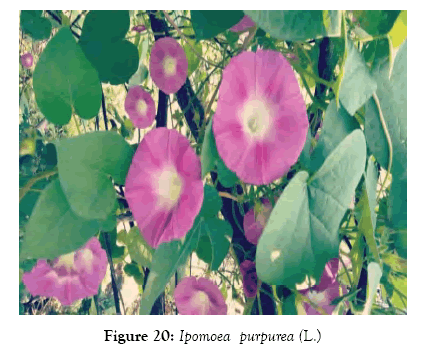
Figure 20: Ipomoea purpurea (L.)
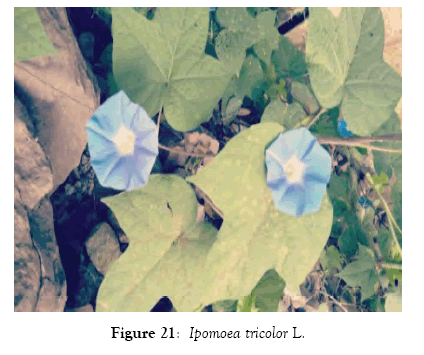
Figure 21: Ipomoea tricolor L.
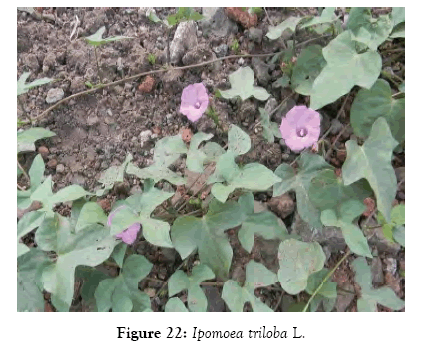
Figure 22: Ipomoea triloba L.
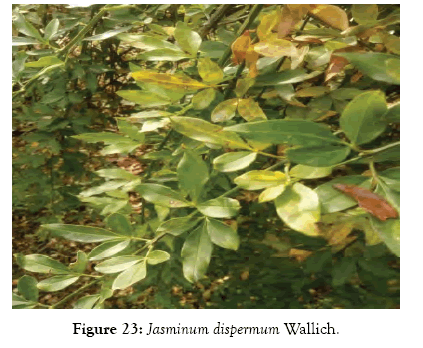
Figure 23: Jasminum dispermum Wallich.
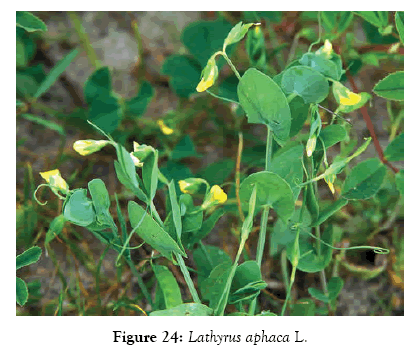
Figure 24: Lathyrus aphaca L.
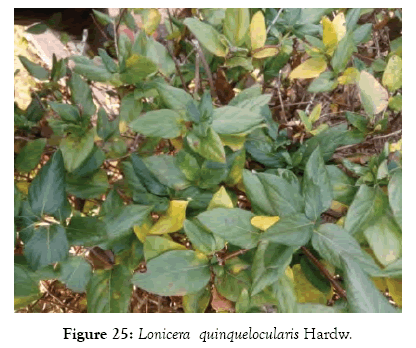
Figure 25: Lonicera quinquelocularis Hardw.
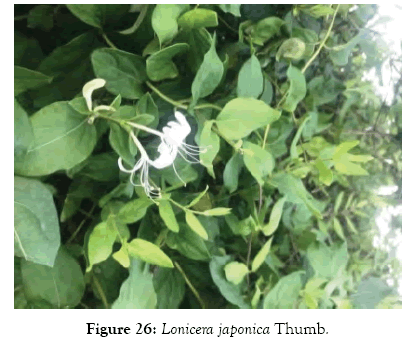
Figure 26: Lonicera japonica Thumb.
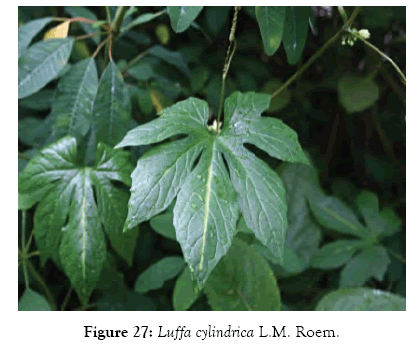
Figure 27: Luffa cylindrica L.M. Roem.
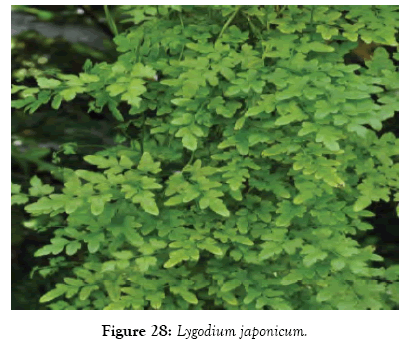
Figure 28: Lygodium japonicum.
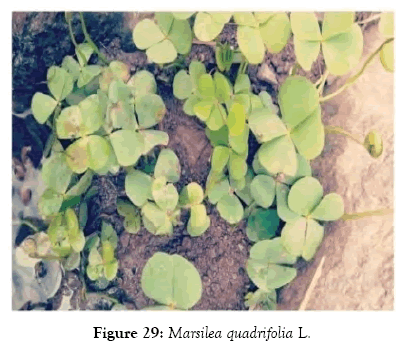
Figure 29: Marsilea quadrifolia L.
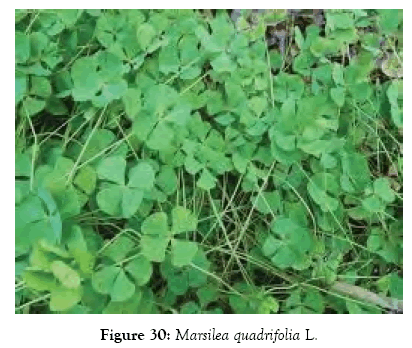
Figure 30: Marsilea quadrifolia L.
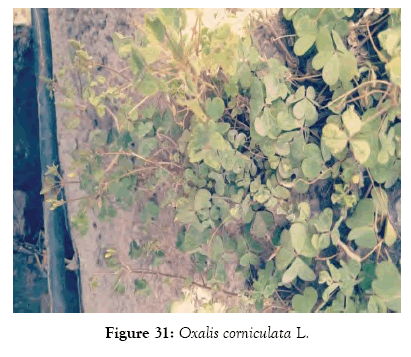
Figure 31: Oxalis corniculata L.
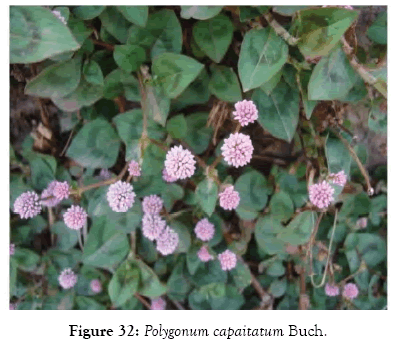
Figure 32: Polygonum capaitatum Buch.
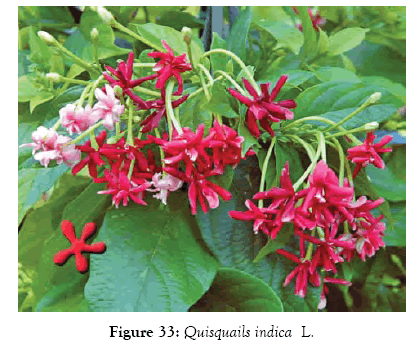
Figure 33: Quisquails indica L.
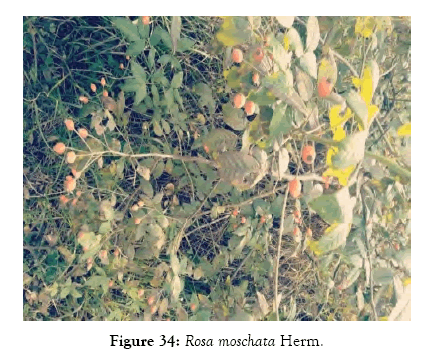
Figure 34: Rosa moschata Herm.
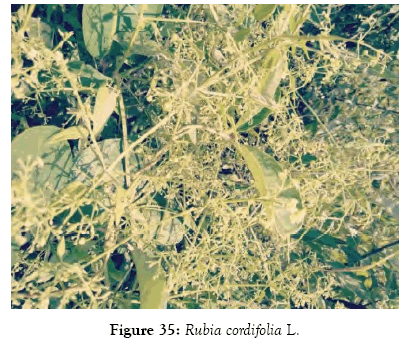
Figure 35: Rubia cordifolia L.
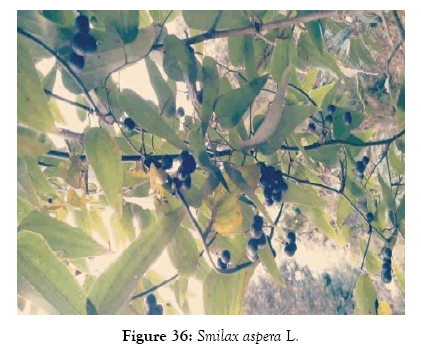
Figure 36: Smilax aspera L.
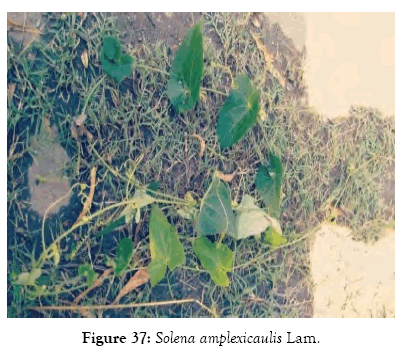
Figure 37: Solena amplexicaulis Lam.
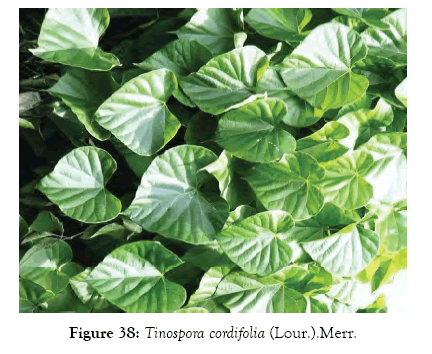
Figure 38: Tinospora cordifolia (Lour.).Merr.
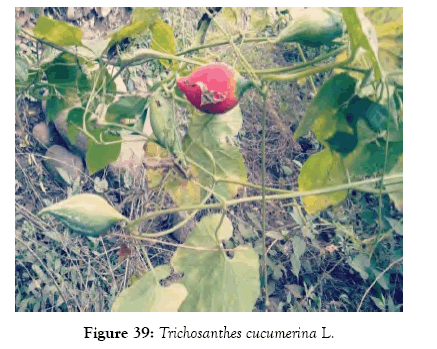
Figure 39: Trichosanthes cucumerina L.
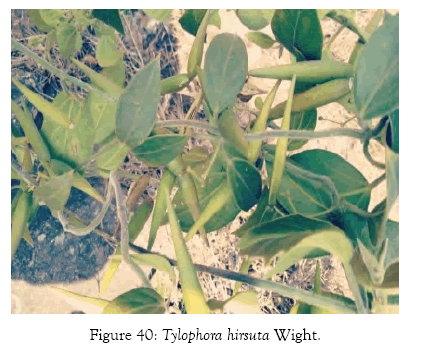
Figure 40: Tylophora hirsuta Wight.
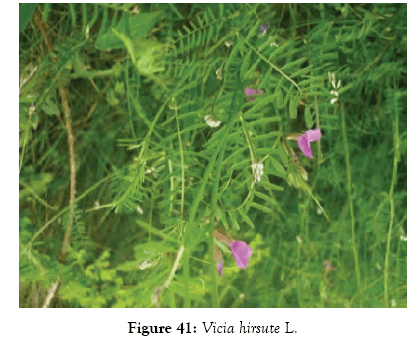
Figure 41: Vicia hirsute L.
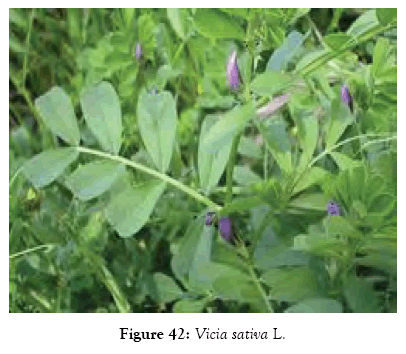
Figure 42: Vicia sativa L.
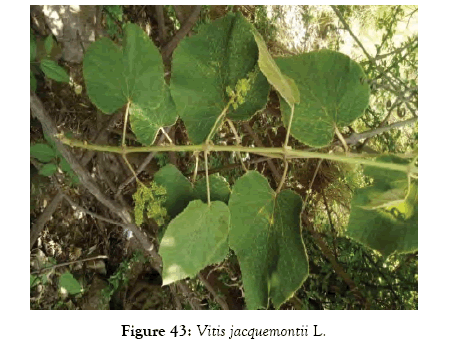
Figure 43: Vitis jacquemontii L.
Rajouri district is located on southerly foothills of the Pir Panjal Himalaya are botanically the least surveyed area in Jammu Province with very little preliminary information of available on their flora, this data matches with that of Singh and Kirn provide a list of some alpine plants of Poonch; Kirn presented a brief account of some medicinal plants of Pir Panjal range: Singh gave an introductory account of some wild flowering plants of Rajouri; Vir Jee et al. reported their concise taxa-ethnobotanical observation made in some rural areas of Rajouri. During the present investigation, it was found that almost all the species of twiner and climbers recorded for their ethnobotanical uses were found medicinally important. Over utilization not only degraded the local vegetation and natural beauty but also made certain species endangered Rubia cordifolia L., Vitis jacquemontii L. Dioscorea bulbifera L. Tinospora cordifolia Willd. Hook. Were disappearing day by day. Total certain direct crusades such as commercial and subsistence purposes and indirect crusades such as insecure land tenure, poverty and population growth were also influencing the local vegetation. Therefore there is a desperate need for the aegis of this wealth of nature until it vanishes on this planet.
Citation: Mohmood T (2019) Ethnobotanical Study of Useful Climbers Creepers & Twiners of Baba Ghulam Shah Badshah University campus and Adjoining Areas of District Rajouri (J&K). Med Aromat Plants (Los Angeles) 8: 340. doi: 10.35248/2167-0412.19.8.340
Received: 23-Jul-2019 Accepted: 04-Dec-2019 Published: 11-Dec-2019 , DOI: 10.35248/2167-0412.19.8.340
Copyright: © 2019 Mohmood T. This is an open-access article distributed under the terms of the Creative Commons Attribution License, which permits unrestricted use, distribution, and reproduction in any medium, provided the original author and source are credited.